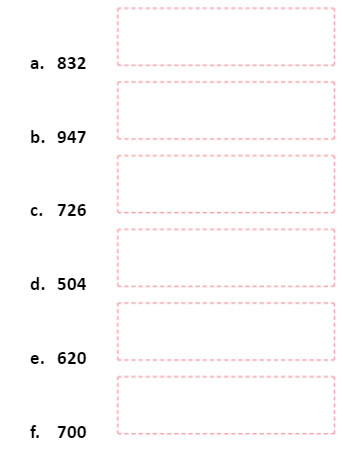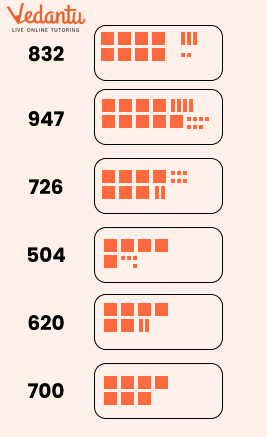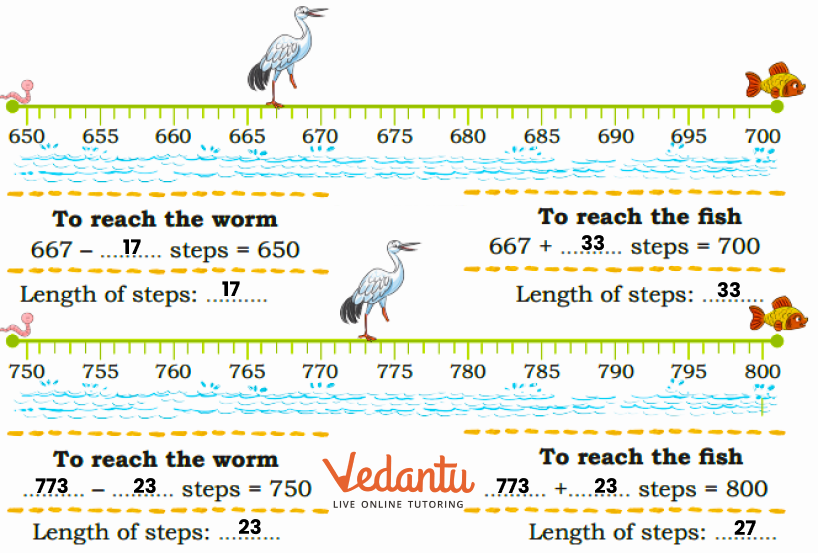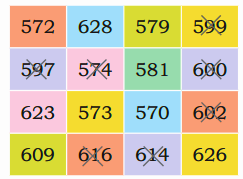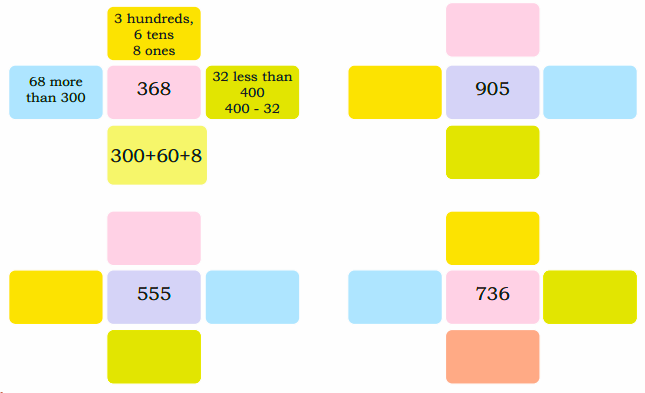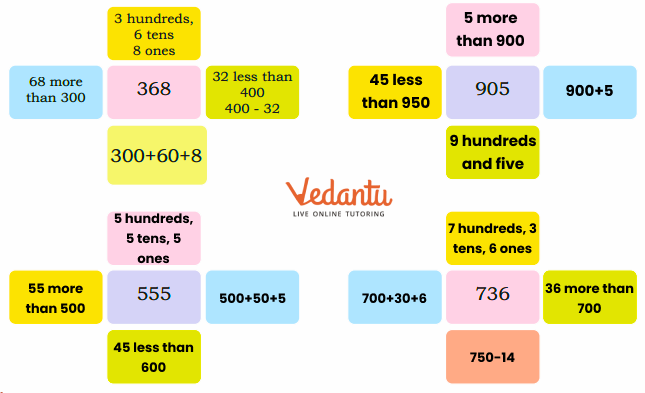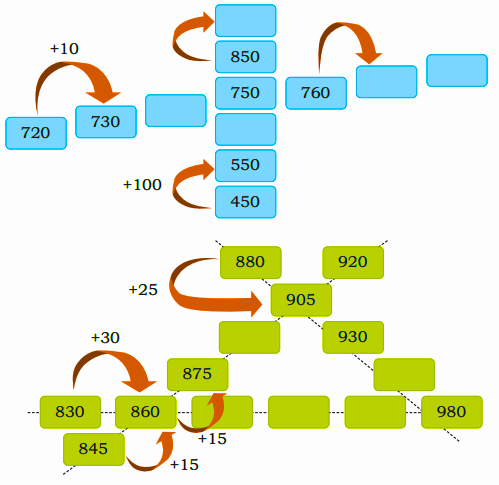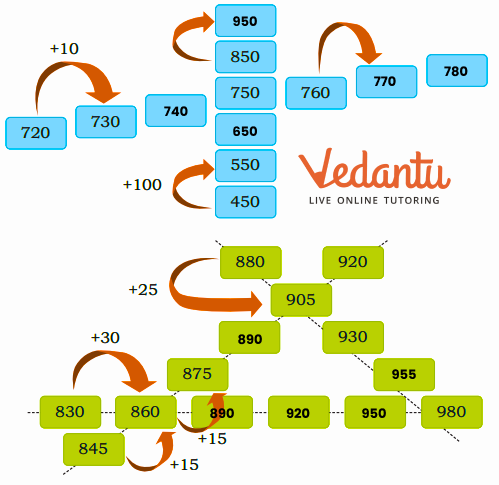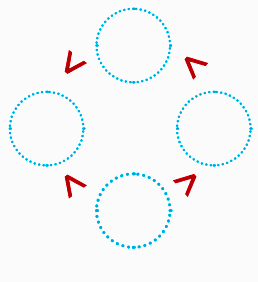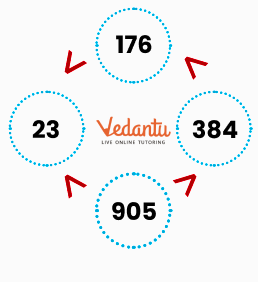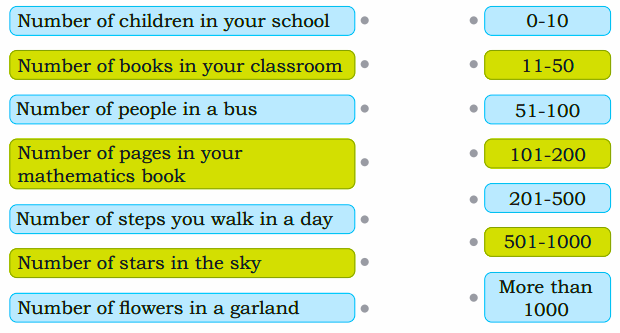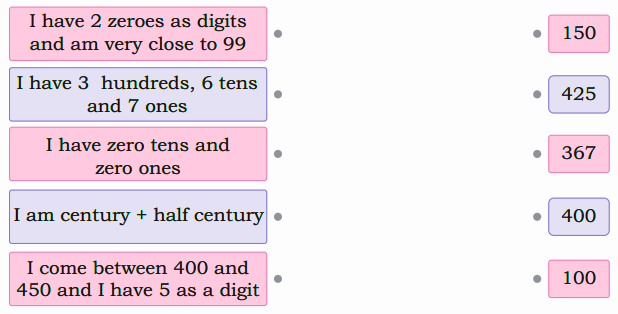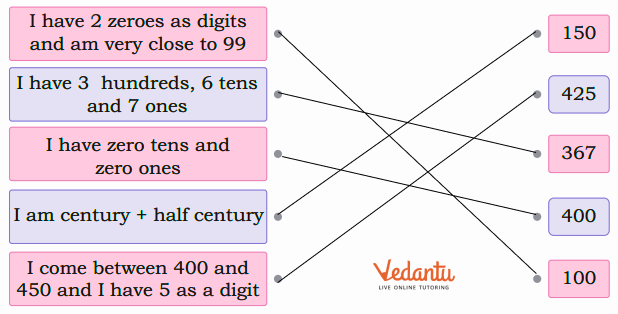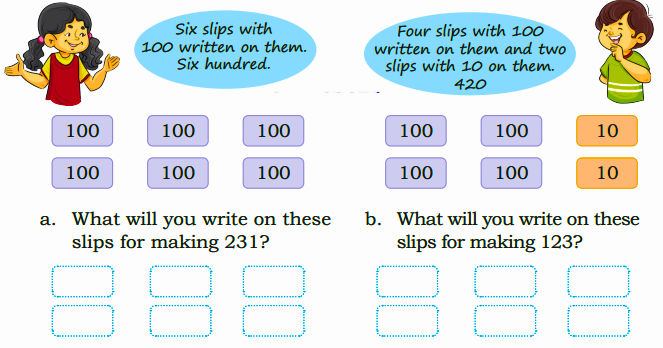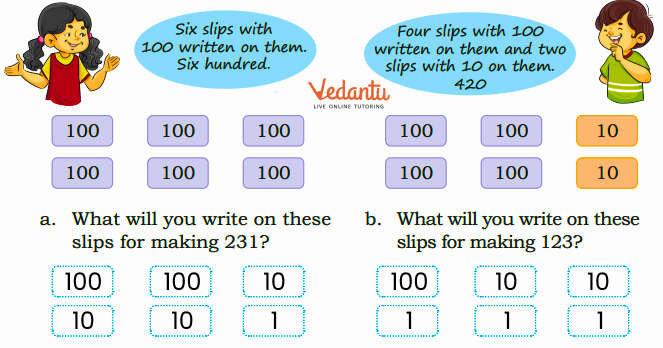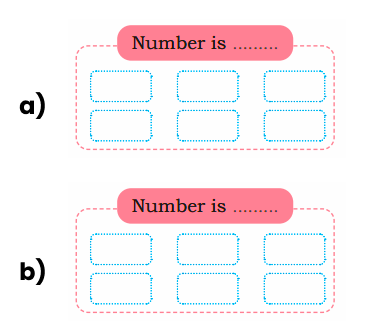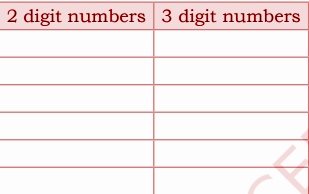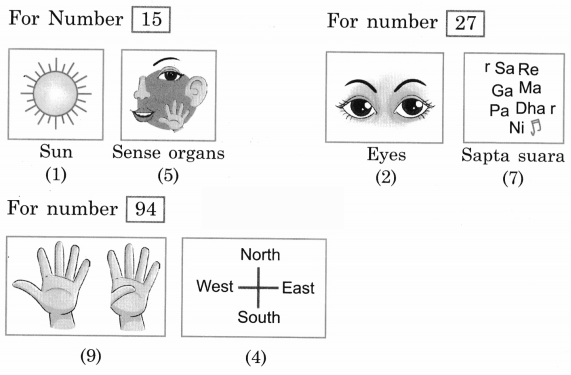House Of Hundreds Ii - Exercise-wise Questions and Answers For Class 3 Maths - Free PDF Download
FAQs on NCERT Solutions For Class 3 Maths Chapter 9 House Of Hundreds Ii - 2025-26
1. What are the correct stepwise NCERT solutions for Class 3 Maths Chapter 9 House of Hundreds Part II as per CBSE 2025–26 syllabus?
The correct stepwise NCERT solutions for Class 3 Maths Chapter 9 House of Hundreds Part II strictly follow the updated CBSE 2025–26 NCERT textbook. Solutions demonstrate place value concepts, hundreds-tens-ones grouping, and problem-solving as per activity-based learning. Each answer matches the official NCERT answer format, ensuring you solve every exercise and intext question as required by the CBSE guidelines. Students should explain their workings wherever needed and represent numbers accurately as shown in the textbook.
2. How can I download the NCERT Solutions for Class 3 Maths Chapter 9 PDF for free?
You can download the Class 3 Maths Chapter 9 NCERT Solutions PDF for free from trusted educational platforms that provide official textbook-based content. The solution PDF will include stepwise answers for all exercises in Chapter 9, formatted as per CBSE-approved NCERT guidelines, ensuring readability and alignment with the current syllabus.
3. Are the NCERT solutions for Class 3 Maths Chapter 9 available in both English and Hindi language?
Yes, NCERT solutions for Class 3 Maths Chapter 9 are available in both English and Hindi medium, following the same stepwise explanation and NCERT pattern in each language. This supports all CBSE and state-board students to understand and practice every solution as per their preferred language format.
4. How do the NCERT textbook answers for Chapter 9 help students solve grouping and place value questions?
NCERT textbook answers for Chapter 9 guide students through grouping numbers into hundreds, tens, and ones using a stepwise and pictorial approach. Each solution demonstrates the proper breakdown of numbers, which helps students apply the concept of place value and understand how numbers are formed and grouped, as per the latest NCERT-approved curriculum.
5. Where can I find Class 3 Maths Chapter 9 worksheet with answers PDF free and NCERT-approved?
Class 3 Maths Chapter 9 worksheets with answers in PDF format are available for free download on popular educational sites offering NCERT and CBSE-backed resources. Each worksheet answer strictly follows the stepwise NCERT answer key to help students practice and verify their solutions for all exercises and activities in House of Hundreds Part II.
6. What kind of questions are solved in NCERT Solutions for Class 3 Maths Chapter 9 Part 2?
NCERT Solutions for Class 3 Maths Chapter 9 Part 2 solve questions related to grouping, counting with hundreds, tens, and ones, recognizing larger numbers, pictorial addition, and simple subtraction as per textbook intext and exercise questions. The stepwise method is followed throughout, using clear explanations and visual aids encouraged by NCERT.
7. Do the answers for Class 3 Maths Chapter 9 follow CBSE 2025–26 NCERT textbook format exactly?
All solutions for Class 3 Maths Chapter 9 are prepared using the exact official CBSE 2025–26 NCERT textbook format. Stepwise solutions, clear workings, and presentation as per the latest syllabus ensure that students’ responses are marked correct in school and exams.
8. How should I present answers for Chapter 9 House of Hundreds II using NCERT method?
Present your answers stepwise, showing grouping into hundreds-tens-ones, including neat calculations and clear explanations, just as demonstrated in the NCERT textbook. Using pictorial representations or tables when required strengthens your answer and matches the NCERT answer structure, increasing your accuracy for CBSE assessments.
9. Are these solutions considered the official answer key for Chapter 9 of Class 3 Maths?
These solutions serve as the official answer key, as they closely follow the stepwise NCERT pattern and CBSE-approved explanations for all textbook questions, activities, and exercises in Chapter 9. They provide correct and accepted answers for all types of questions in House of Hundreds II.
10. What should I do if my Chapter 9 answer does not match the stepwise NCERT solution format?
If your answer format for Chapter 9 does not match the NCERT solution’s stepwise approach, revisit the question using the CBSE-approved method. Break down numbers into hundreds, tens, and ones, show your calculation steps, and use examples just as in the NCERT textbook to ensure your answer is correct and complete.
11. What is the best way to practice for House of Hundreds II using NCERT intext and back exercises?
The best practice method is to attempt all intext and back exercises from Chapter 9 using the stepwise explanations provided in NCERT solutions. Check each answer against the NCERT-approved solution, ensuring every step and calculation is presented as per the official format. Using question-wise solutions and worksheets also helps reinforce your understanding.
12. How do I avoid common mistakes while solving grouping sums in Class 3 Maths Chapter 9?
To avoid mistakes in grouping sums, always organize numbers into hundreds, tens, and ones before performing any addition or subtraction. Follow the stepwise NCERT answer key closely, write numbers neatly, and review your workings. If required, use tables or drawings as shown in the textbook examples to double-check your answer's correctness.



























